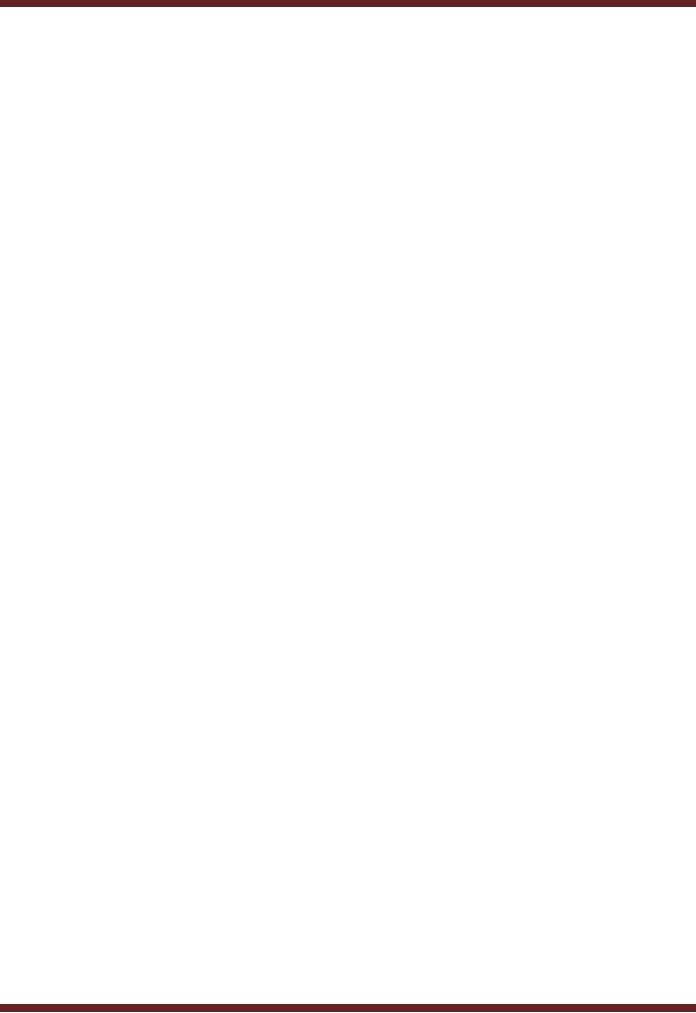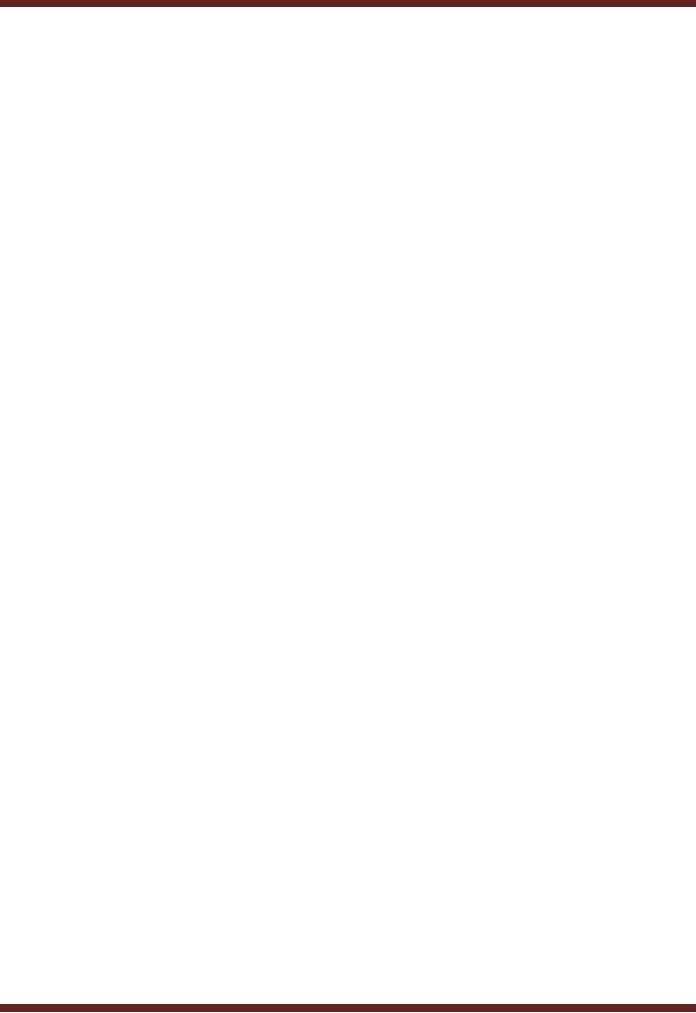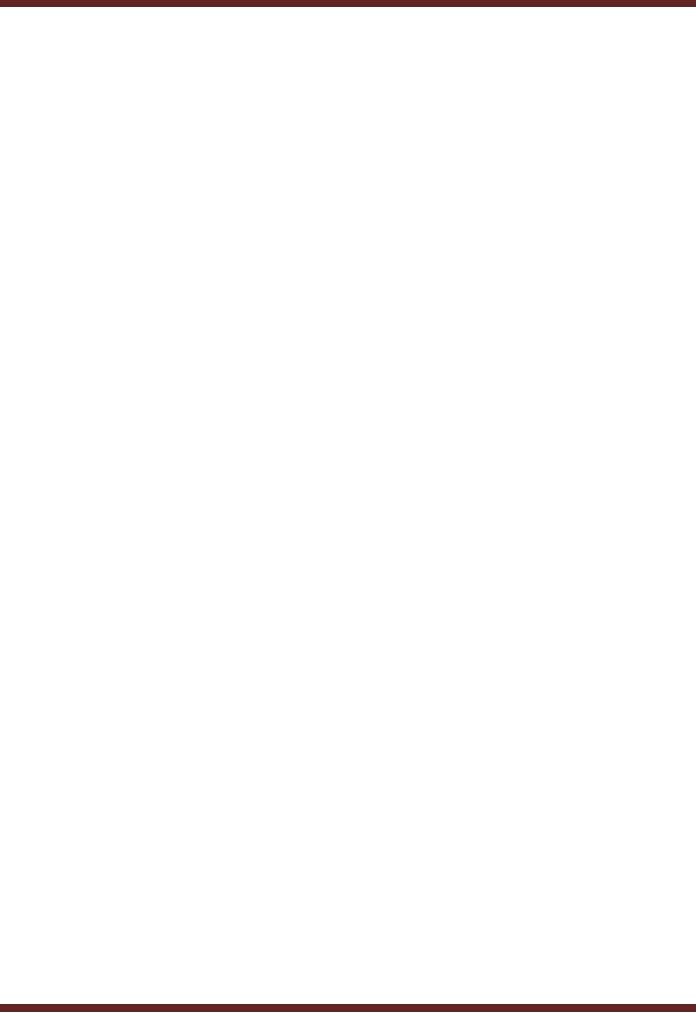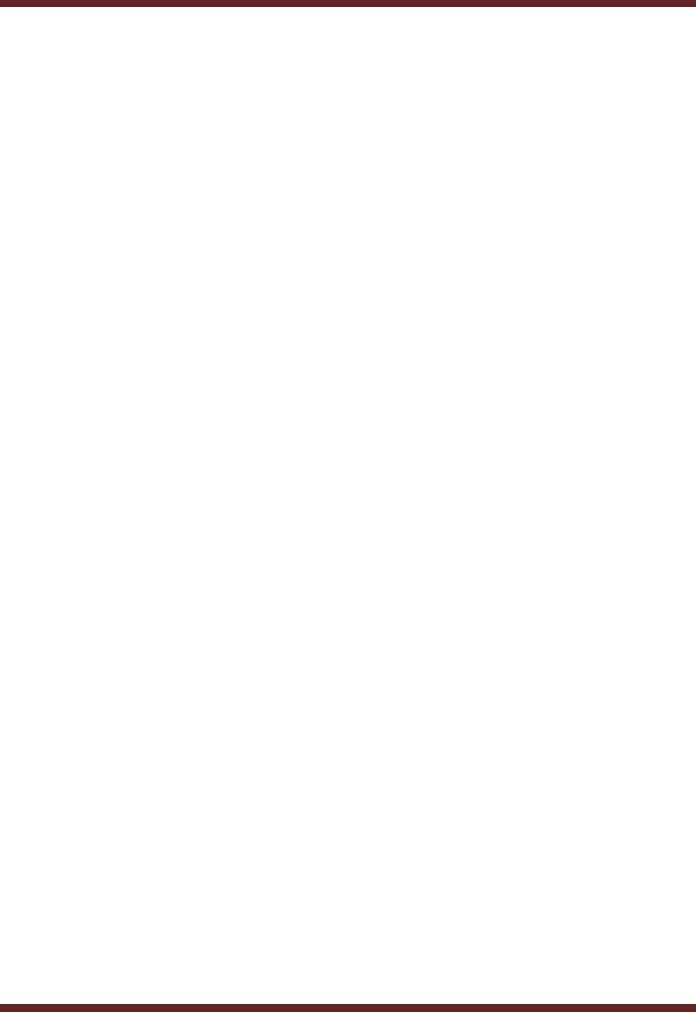 |

VU
Information
System (CS507)
LESSON
5
Effect of
Changes in Environment
Business
Environment is
defined as "all elements
that exist outside the boundary of the
business
(Organization)
and have the potential to affect
all or part of the organization
5.1
Elements of Environment
It is a collective
reference made to the following
factors
� Legal
� Ethics
� Economic
� Social
� Technological
5.1.1
Legal
Rules
and Policies and Legal
Laws established by government effect the
Business Environment
Change
in tariff rate may increase
or decrease operation of the
business.
Laws
imposed to regulate business
o Companies
Ordinance 1984: It is the Law under
which a company performs its
business
activities.
o Import
Export regulations: Government
announces Import & Export Policy at
the time of
annual
budget. Goods which are
manufactured in the country is encouraged
by levying high
duties
on imported goods and
encouraged export.
o International
trade agreements
e.g.
o European
Union (EU): A number of regional
agreements have been signed
by the EC and
Pakistan
such as:
o World
Trade Organization (WTO): The
World Trade Organization (WTO) is
an
international,
multilateral organization, which was
created as a result of the Uruguay round
of
discussion
in 1994 to harmonic world trade. Various
agreements between member
countries
has
resulted in lowering import
tariffs, bringing down
protective trade barriers
setting up anti
dumping
procedures and settlement
methods. However it has
failed to achieve any
headway in
getting
member countries to eliminate subsidies
provided t other agriculture sector by
nearly all
member
states. As a result the WTO is currently
faced with the threat of failure. The
WTO
trade
and services arrangements
effectively replaced the general
Agreement on Trade Tariffs
(GATT).
South
Asia Free Trade Agreement
(SAFTA): The
South Asia Free Trade
Agreement
o
(SAFTA)
was agreed to among the
seven South Asia countries
that form the South
Asian
Association
for Regional Cooperation (SAARC):
Bangladesh, Bhutan, India, Maldives,
Nepal,
Pakistan
and Sri Lanka. SAFTA came
into effect on 1 January 2006,
with the aim of
reducing
tariffs
for intraregional trade among the
seven SAARC members.
Pakistan and India are
to
complete
implementation by 2012, Sri Lanka by
2013 and Bangladesh, Bhutan,
Maldives and
Nepal
by 2015.
5.1.2
Economic
To
make a profit without
raising prices, the company
turned to making simpler
furniture
designs
and increasing its technological
efficiency.Developments within the economy
which
may
affect the business environment
Inflation
rates:
o
14

VU
Information
System (CS507)
Inflation
rate is an indicator of economic
growth of a country. Inflation rate in
Pakistan is 6.1
percent.
Bank
Interest Rate:
o
Availability
of capital in the capital, in the
capital/money markets
o
Capital/
Money market is access able
for an Entrepreneur who starts
business with his savings
and
with
equity from capital/ money
markets on favourable interest
rate.
Foreign
Exchange rates between two
currencies specifies how
much one currency is worth
in terms
o
of the
other. For example an
exchange rate of 120
Japanese Yen to the Dollar
means that �120 is
worth
the same as $1. An exchange
rate is also known as a
foreign exchange rate, or FX
rate.
Consumer
spending: Patterns of spending give a
good picture of consumer behavior,
showing
o
various
social, economic and
marketplace trends at the household level.
Consumer behavior is
also
revealed
by decisions not to spend.
For example, if enough people are
involved, boycotting a
company
or a product (or even the threat of
it) can be an effective way
for consumers to make
their
opinions
felt. Boycotting has brought
about a number of changes in companies'
social and business
behavior,
such as the development of certain
voluntary codes. In fact,
any consumer decision
to
stop
buying a product can
ultimately and substantially influence
corporate strategies. New trends
in
the
fast food industry's
offerings are one example of
the marketplace's responsiveness
to
consumers'
willingness to walk away.
Employment
opportunities: Information Technology offers a variety
of jobs. In the present
era
o
information
technology is used in every field
like, Banking, Medicine, Laboratories,
Textiles,
Scientific
research etc.
5.1.3
Social
Changing
demographic and social needs
are impacting the business world.
Corporations must address
the
issues pertaining to the changing
needs and requirements to retain
and enhance market
positions.
The
internationalization of business brings
greater pressure as variety of cultures,
customs and practices
need
to be taken into account
whilst conducting business. The
employees are today more
aware of their
social
needs whether these related to the
work environment, behaviour, children
education health,
compensation
or work hours. National
interests and culture have to be
considered while offering
a
particular
product or service or exploiting the
natural resources of a particular country.
This
includes
o Demographic
changes leading to changes in
needs:
o Age
Composition:
o Gender:
o Occupations
o Social
norms
o Changing
attitudes and
perceptions
o Lifestyle
o Prosperity
o Availability
of foreign brands/products
5.1.4
Technological
The
most overwhelming change in the technology
sector is rapid expansion of the
internet as a place
for
doing business. The World
Wide Web and other
advances in information technology have
changed
the
whole face of
business.
15

VU
Information
System (CS507)
To
produce desired products,
It
is necessary for a business to
stay in market to produce
the
o
goods
according to the desire of the consumers.
Due to the change in technology day by
day
innovations
has been taken place.
Competitors by using the technology reducing the
cost and
improving
the quality.
To
solve a problem,: There
are varieties of problems
facing a business in the contemporary
world.
o
Information
technology is being used to overcome the
business issues like,
Marketing, Brand of the
product,
Quality of the product, Cost
control, Organizational internal and
external issues etc.
To
fulfill a need: Information
system must fulfill the
needs of the business. An
organization
o
needs
information of its customers,
product, market trend, employee
information, payroll,
manufacturing
cost etc. In time information
helps the organization launch its
product in time to
maximize
profit.
The
way products are developed and
offered to the customers keeps
changing thus affecting the
o
business
environment in which the organization
works
Pressures/Challenges
The
changes in business environment
pose challenges on the organizations
which need to be
responded
to.
Following are the
pressures
�
Competition
for cheaper factors of
production
Cheaper
factor of production is a challenge
for the survival of a company in
competitive market.
Factors
of production are basic
elements of reducing manufacturing cost.
Cheap and skilled
labour
Availability
of raw material, infrastructure.
�
Changing
workforces
Lack of
availability of skilled and experience
force in market is a challenge for an
organization.
Continue
change in work force is harmful
for an organization.
�
Enhanced
customer quality
For
the enhancement customer quality
consistently provide innovative
products, with outstanding
customer
service and help their
customers achieve operational excellence.
An Organization ability to
provide
outstanding product quality, service
support, and their ability to
enhance product
quality,
achieve
shorter delivery times, reduce scrap,
rework and reduced life
cycle costs
� Technological
Obsolescence
Technological
obsolescence is the result of the
evolution of technology: as newer
technologies appear,
older
ones cease to be used. For
example, new media for
storing digital information rapidly
replace older
media
and reading devices for
these older media become no
longer available. Newer versions of
software
constantly
render older versions
obsolete and the hardware required by
this software also changes
over
time.
Consequently, information which
relies on obsolete technologies
becomes inaccessible. Currently,
it
seems
that the lifetime of digital
storage media generally
exceeds the life of the technology that
supports
it.
� Information
overload
In
recent decades, technology has so
enhanced our ability to
gather data that the sheer
volume of data
now
outstrips our capacity to deal
with it. Informatics is
taking this seemingly unmanageable
flood of data
and
transforming it into information that
helps solve key problems in
fields like medicine,
genetics,
chemistry,
Internet security and
engineering
16

VU
Information
System (CS507)
5.1.5
Corporate social
responsibility
Corporate
social responsibility (CSR) is an
expression used to describe what
some see as a company's
obligation
to be sensitive to the needs of not
only all of the stakeholders in
its business operations
but
more
importantly the community at large. It
has been defined
as:
"The
continuing commitment by business to
behave ethically and contribute to
economic development
while
improving the quality of life of the
workforce and their families
as well as the local community
and
society
as large."
Businesses
are now seen as partners of
the communities in which they may be
located rather than simply
as a
profit making set up serving the
needs of their stake
holders.
Corporate
social responsibility incorporates the
principle of sustainable development along
with "triple
bottom
line reporting" reflecting not
only financial results but
also social and
environmental impact of
the
business.
The
CSR may be looked after by an independent
department reporting directly to the board or may be
a
part
of the business development or human
resource department.
5.1.6
Ethics
Corporate or
business ethics have attained
vital importance in today's world.
The issue not
only
addresses
matters such as how those
charged with governance and
managing businesses take
decisions
but
importantly the employee conduct and
behaviour the corporations responsibility in terms of
its
image,
product, branding, trade, business
practices and compliance
with not only national
and regional
but
also international
laws.
The
huge number of financial and corporate
scandals has moved the regulators to
take suitable action. In
Pakistan
all listed companies particularly are
required to follow the code of corporate
governance.
17
Table of Contents:
- Need for information, Sources of Information: Primary, Secondary, Tertiary Sources
- Data vs. Information, Information Quality Checklist
- Size of the Organization and Information Requirements
- Hierarchical organization, Organizational Structure, Culture of the Organization
- Elements of Environment: Legal, Economic, Social, Technological, Corporate social responsibility, Ethics
- Manual Vs Computerised Information Systems, Emerging Digital Firms
- Open-Loop System, Closed Loop System, Open Systems, Closed Systems, Level of Planning
- Components of a system, Types of Systems, Attributes of an IS/CBIS
- Infrastructure: Transaction Processing System, Management Information System
- Support Systems: Office Automation Systems, Decision Support Systems, Types of DSS
- Data Mart: Online Analytical Processing (OLAP), Types of Models Used in DSS
- Organizational Information Systems, Marketing Information Systems, Key CRM Tasks
- Manufacturing Information System, Inventory Sub System, Production Sub System, Quality Sub system
- Accounting & Financial Information Systems, Human Resource Information Systems
- Decision Making: Types of Problems, Type of Decisions
- Phases of decision-making: Intelligence Phase, Design Phase, Choice Phase, Implementation Phase
- Planning for System Development: Models Used for and Types of System Development Life-Cycle
- Project lifecycle vs. SDLC, Costs of Proposed System, Classic lifecycle Model
- Entity Relationship Diagram (ERD), Design of the information flow, data base, User Interface
- Incremental Model: Evaluation, Incremental vs. Iterative
- Spiral Model: Determine Objectives, Alternatives and Constraints, Prototyping
- System Analysis: Systems Analyst, System Design, Designing user interface
- System Analysis & Design Methods, Structured Analysis and Design, Flow Chart
- Symbols used for flow charts: Good Practices, Data Flow Diagram
- Rules for DFD’s: Entity Relationship Diagram
- Symbols: Object-Orientation, Object Oriented Analysis
- Object Oriented Analysis and Design: Object, Classes, Inheritance, Encapsulation, Polymorphism
- Critical Success Factors (CSF): CSF vs. Key Performance Indicator, Centralized vs. Distributed Processing
- Security of Information System: Security Issues, Objective, Scope, Policy, Program
- Threat Identification: Types of Threats, Control Analysis, Impact analysis, Occurrence of threat
- Control Adjustment: cost effective Security, Roles & Responsibility, Report Preparation
- Physical vs. Logical access, Viruses, Sources of Transmissions, Technical controls
- Antivirus software: Scanners, Active monitors, Behavior blockers, Logical intrusion, Best Password practices, Firewall
- Types of Controls: Access Controls, Cryptography, Biometrics
- Audit trails and logs: Audit trails and types of errors, IS audit, Parameters of IS audit
- Risk Management: Phases, focal Point, System Characterization, Vulnerability Assessment
- Control Analysis: Likelihood Determination, Impact Analysis, Risk Determination, Results Documentation
- Risk Management: Business Continuity Planning, Components, Phases of BCP, Business Impact Analysis (BIA)
- Web Security: Passive attacks, Active Attacks, Methods to avoid internet attacks
- Internet Security Controls, Firewall Security SystemsIntrusion Detection Systems, Components of IDS, Digital Certificates
- Commerce vs. E-Business, Business to Consumer (B2C), Electronic Data Interchange (EDI), E-Government
- Supply Chain Management: Integrating systems, Methods, Using SCM Software
- Using ERP Software, Evolution of ERP, Business Objectives and IT
- ERP & E-commerce, ERP & CRM, ERP– Ownership and sponsor ship
- Ethics in IS: Threats to Privacy, Electronic Surveillance, Data Profiling, TRIPS, Workplace Monitoring